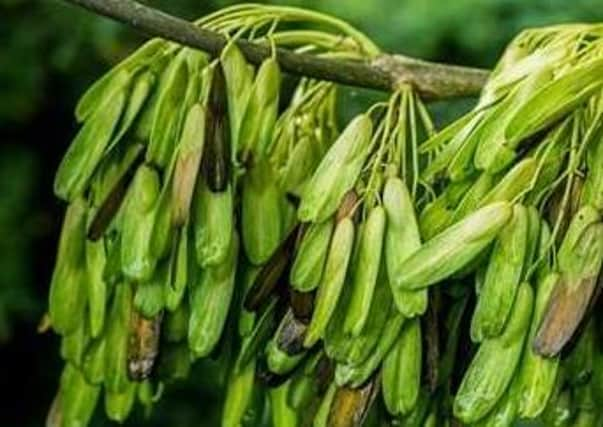Ash to ashes


In my childhood, the ash was that tree which provided those little winged seeds that fall to the ground like helicopters.
In adulthood, the ash became the tree you noticed, as it was the last on the farm to waken up and clothe itself in green for the spring. Slow as it is, the ash makes up for its shortcomings in foliage by the quality of its wood, which has an amazing ability to absorb an impact without splintering.
Advertisement
Advertisement
As a result, it is used for things like axe and spade handles, hockey sticks and oars - and watch out for that that stump you have left behind after felling one.


I really don’t know a tree like it for being able to vigorously produce a bush of new shoots in no time at all. While our beloved ash is generally a very resilient species, today it has sadly become the victim of a fungal disease called ash dieback - with no apparent resistance to it.
Trees form a backdrop for the story of humanity. Adam and Eve disobeyed God by eating from the Tree of the Knowledge of Good and Evil, and sinful nature spread uncontrollably. It is thought that ash dieback came into our province in 2012, through one shipment of infected saplings. The Apostle Paul says about the arrival and spread of sin that, “Sin entered the world through one man (Adam), and death through sin, and in this way death came to all men, because all sinned,” (Romans 5:12). We have no resistance to this condition either.
While the signs of an ash dieback infection (blackened leaves and deep cracks in the trunk) can be spotted early, there is no cure for the disease.
Advertisement
Advertisement
The only available measure for an infected ash tree is to chop it down and burn it - ‘ash to ashes’.
In the Bible, the chopping down of a tree is used as a metaphor for the judgment we deserve for our sin. For example, John the Baptist announced to his audience, “The axe is already at the root of the trees, and every tree that does not produce good fruit will be cut down and thrown into the fire,” (Matthew 3:10).
God has given us the gift of another tree to rescue us from that fate, and it is the tree of Calvary on which His Son died in our place. The Apostle Peter explains, “He Himself bore our sins in his body on the tree...by his wounds you have been healed,” (1 Peter 2:24). Jesus Christ absorbed a terrible impact without splintering. He endured the wrath of God for our sin so that we might escape the fire of judgement to come.
He was cut down, but now he lives, and is vigorously producing a new humanity populated by all who flee to Him for mercy. Have you been grafted into Him yet? To all who unite themselves to Him, He will one day grant the right to eat from the Tree of Life, which grows in the Paradise of God.
Advertisement
Advertisement
Rev Norman Smyth is married to Linda and they have three children. The son of a County Antrim dairy farmer, he is the minister of First and Second Markethill in County Armagh.
If you would like to talk to someone about any of the subjects raised in this article, please email Rev Kenny Hanna at [email protected] or call him on 028 9753 1234.